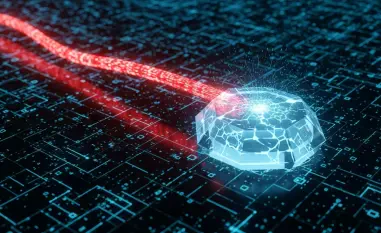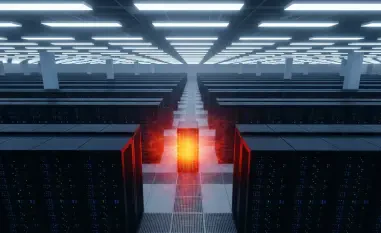In an era where cyberattacks are growing more sophisticated and frequent, artificial intelligence (AI) is becoming a critical component of cybersecurity strategies. As digital threats evolve, traditional defense mechanisms struggle to keep up, thereby necessitating the use of advanced technologies like AI to enhance protection measures. This transformation signifies a shift from reactive to proactive security, driven by intelligent systems capable of monitoring, predicting, and responding to various threats.
Smart Surveillance and Real-Time Monitoring
One of the significant ways AI is revolutionizing cybersecurity is through smart surveillance and real-time monitoring. AI systems equipped with machine learning capabilities can analyze vast amounts of data rapidly across networks and distinguish between normal behavior and potential threats. This enables the detection of anomalies, such as unusual login attempts or suspicious data transfers, long before they escalate into severe breaches, thereby enhancing the overall security posture.
Such AI-driven monitoring systems continuously learn from the data they process, becoming more adept at identifying complex threat patterns over time. This adaptability ensures that new types of cyberattacks are quickly recognized and mitigated, providing an essential layer of defense in a constantly changing threat landscape. Additionally, AI’s ability to work around the clock without fatigue offers unparalleled monitoring efficiency.
Predictive Analytics
AI’s predictive analytics capability is another groundbreaking advancement in cybersecurity. By leveraging historical cyberattack data, AI algorithms can identify patterns and predict future vulnerabilities. This proactive approach allows organizations to address potential security gaps before hackers have a chance to exploit them, essentially moving the defense strategy from a reactive stance to a preventive one.
Predictive analytics enables security teams to allocate resources more effectively by focusing on areas with the highest risk. It also facilitates the development of more robust security protocols, customized according to the specific threat landscape of an organization. This foresight not only enhances security measures but also significantly reduces the potential impact and cost of cyber incidents.
Automated Responses
Another transformative aspect of AI in cybersecurity is the automation of incident responses. AI tools can drastically reduce the time required for responding to threats, from minutes down to milliseconds. These tools can detect malware, automatically restrict access, and alert security teams without the need for human intervention. This enhances the speed and efficiency of counterattacks, minimizing damage and ensuring a swift return to normal operations.
Automated responses also relieve the burden on human security teams, allowing them to focus on more complex tasks that require human judgment and experience. The integration of AI in incident response workflows leads to a more resilient and adaptive security infrastructure, capable of withstanding the barrage of modern cyber threats.
Real-World Applications Across Industries
AI’s impact on cybersecurity is evident across various industries, each benefiting from its advanced capabilities in different ways. In the financial sector, banks use AI for real-time fraud detection and advanced encryption techniques to safeguard financial data. These measures prevent unauthorized access and ensure the confidentiality of sensitive information.
In healthcare, AI is instrumental in securing patient records and ensuring compliance with data privacy regulations amid the digitization of medical information. This protection is crucial as healthcare systems are increasingly targeted by cybercriminals seeking valuable personal data.
The application of AI extends to the realm of IoT and edge security, where it protects interconnected devices like smart homes and cars. By processing data locally, AI reduces latency and enhances real-time security, ensuring that these devices operate safely and securely.
Challenges and Future Directions
In today’s digital age, the sophistication and frequency of cyberattacks are escalating, making artificial intelligence (AI) an essential element in cybersecurity. As cyber threats evolve and become more complex, traditional defense mechanisms often fall short in providing adequate protection. This has led to the increasing integration of advanced technologies like AI into cybersecurity strategies. AI’s ability to analyze vast amounts of data, identify patterns, and predict potential threats allows for a proactive approach to security. Instead of merely reacting to incidents after they occur, intelligent systems can monitor network activities in real-time, anticipate various threats, and respond quickly and efficiently. This paradigm shift from reactive to proactive defense signifies a crucial evolution in how digital security is managed. AI-driven tools are enhancing the ability to safeguard sensitive information, mitigate risks, and protect against unauthorized access. As technology continues to advance, the role of AI in cybersecurity will undoubtedly become even more pivotal, ensuring robust defenses in an increasingly connected world.













